Jesse Read
jesse.read@aalto.fi
Estimating Conditional Covariance between labels for Multilabel Data
Aug 26, 2025Abstract:Multilabel data should be analysed for label dependence before applying multilabel models. Independence between multilabel data labels cannot be measured directly from the label values due to their dependence on the set of covariates $\vec{x}$, but can be measured by examining the conditional label covariance using a multivariate Probit model. Unfortunately, the multivariate Probit model provides an estimate of its copula covariance, and so might not be reliable in estimating constant covariance and dependent covariance. In this article, we compare three models (Multivariate Probit, Multivariate Bernoulli and Staged Logit) for estimating the constant and dependent multilabel conditional label covariance. We provide an experiment that allows us to observe each model's measurement of conditional covariance. We found that all models measure constant and dependent covariance equally well, depending on the strength of the covariance, but the models all falsely detect that dependent covariance is present for data where constant covariance is present. Of the three models, the Multivariate Probit model had the lowest error rate.
Flow Models for Unbounded and Geometry-Aware Distributional Reinforcement Learning
May 07, 2025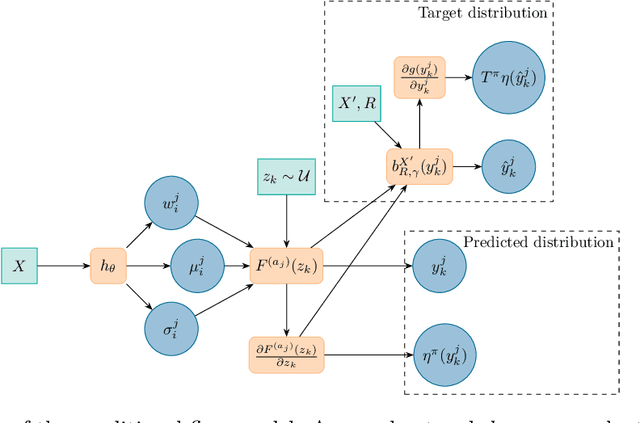

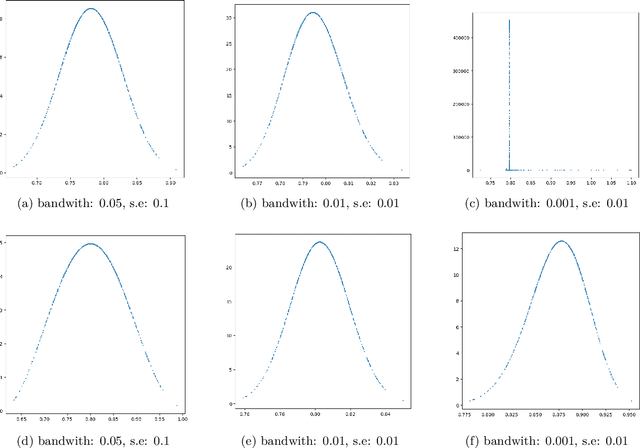

Abstract:We introduce a new architecture for Distributional Reinforcement Learning (DistRL) that models return distributions using normalizing flows. This approach enables flexible, unbounded support for return distributions, in contrast to categorical approaches like C51 that rely on fixed or bounded representations. It also offers richer modeling capacity to capture multi-modality, skewness, and tail behavior than quantile based approaches. Our method is significantly more parameter-efficient than categorical approaches. Standard metrics used to train existing models like KL divergence or Wasserstein distance either are scale insensitive or have biased sample gradients, especially when return supports do not overlap. To address this, we propose a novel surrogate for the Cram\`er distance, that is geometry-aware and computable directly from the return distribution's PDF, avoiding the costly CDF computation. We test our model on the ATARI-5 sub-benchmark and show that our approach outperforms PDF based models while remaining competitive with quantile based methods.
Feature Importance Depends on Properties of the Data: Towards Choosing the Correct Explanations for Your Data and Decision Trees based Models
Feb 11, 2025Abstract:In order to ensure the reliability of the explanations of machine learning models, it is crucial to establish their advantages and limits and in which case each of these methods outperform. However, the current understanding of when and how each method of explanation can be used is insufficient. To fill this gap, we perform a comprehensive empirical evaluation by synthesizing multiple datasets with the desired properties. Our main objective is to assess the quality of feature importance estimates provided by local explanation methods, which are used to explain predictions made by decision tree-based models. By analyzing the results obtained from synthetic datasets as well as publicly available binary classification datasets, we observe notable disparities in the magnitude and sign of the feature importance estimates generated by these methods. Moreover, we find that these estimates are sensitive to specific properties present in the data. Although some model hyper-parameters do not significantly influence feature importance assignment, it is important to recognize that each method of explanation has limitations in specific contexts. Our assessment highlights these limitations and provides valuable insight into the suitability and reliability of different explanatory methods in various scenarios.
Label Cluster Chains for Multi-Label Classification
Nov 01, 2024



Abstract:Multi-label classification is a type of supervised machine learning that can simultaneously assign multiple labels to an instance. To solve this task, some methods divide the original problem into several sub-problems (local approach), others learn all labels at once (global approach), and others combine several classifiers (ensemble approach). Regardless of the approach used, exploring and learning label correlations is important to improve the classifier predictions. Ensemble of Classifier Chains (ECC) is a well-known multi-label method that considers label correlations and can achieve good overall performance on several multi-label datasets and evaluation measures. However, one of the challenges when working with ECC is the high dimensionality of the label space, which can impose limitations for fully-cascaded chains as the complexity increases regarding feature space expansion. To improve classifier chains, we propose a method to chain disjoint correlated label clusters obtained by applying a partition method in the label space. During the training phase, the ground truth labels of each cluster are used as new features for all of the following clusters. During the test phase, the predicted labels of clusters are used as new features for all the following clusters. Our proposal, called Label Cluster Chains for Multi-Label Classification (LCC-ML), uses multi-label Random Forests as base classifiers in each cluster, combining their predictions to obtain a final multi-label classification. Our proposal obtained better results compared to the original ECC. This shows that learning and chaining disjoint correlated label clusters can better explore and learn label correlations.
Branches: A Fast Dynamic Programming and Branch & Bound Algorithm for Optimal Decision Trees
Jun 04, 2024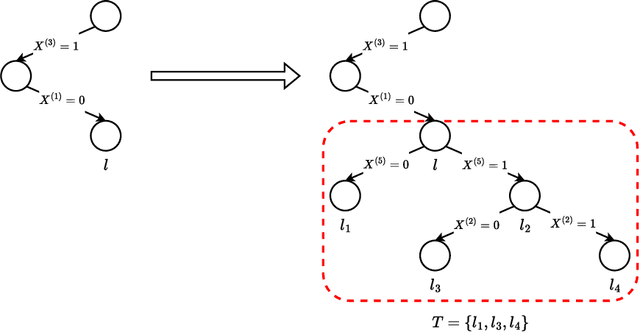


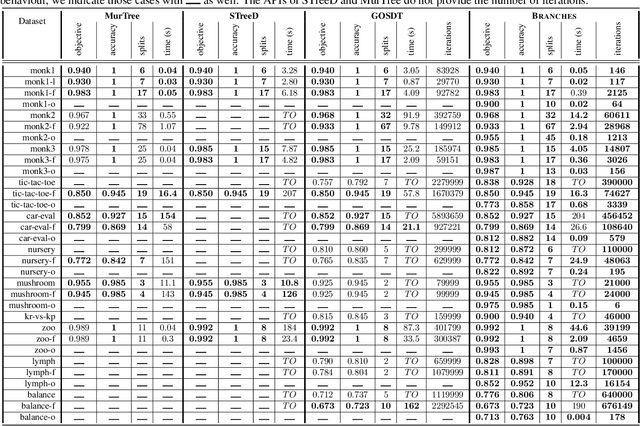
Abstract:Decision Tree Learning is a fundamental problem for Interpretable Machine Learning, yet it poses a formidable optimization challenge. Despite numerous efforts dating back to the early 1990's, practical algorithms have only recently emerged, primarily leveraging Dynamic Programming (DP) and Branch & Bound (B&B) techniques. These breakthroughs led to the development of two distinct approaches. Algorithms like DL8.5 and MurTree operate on the space of nodes (or branches), they are very fast, but do not penalise complex Decision Trees, i.e. they do not solve for sparsity. On the other hand, algorithms like OSDT and GOSDT operate on the space of Decision Trees, they solve for sparsity but at the detriment of speed. In this work, we introduce Branches, a novel algorithm that integrates the strengths of both paradigms. Leveraging DP and B&B, Branches achieves exceptional speed while also solving for sparsity. Central to its efficiency is a novel analytical bound enabling substantial pruning of the search space. Theoretical analysis demonstrates that Branches has lower complexity compared to state-of-the-art methods, a claim validated through extensive empirical evaluation. Our results illustrate that Branches not only greatly outperforms existing approaches in terms of speed and number of iterations, it also consistently yields optimal Decision Trees.
Online Learning of Decision Trees with Thompson Sampling
Apr 09, 2024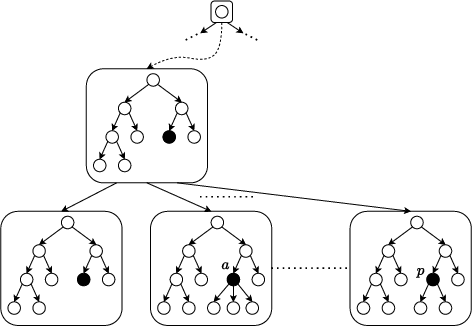
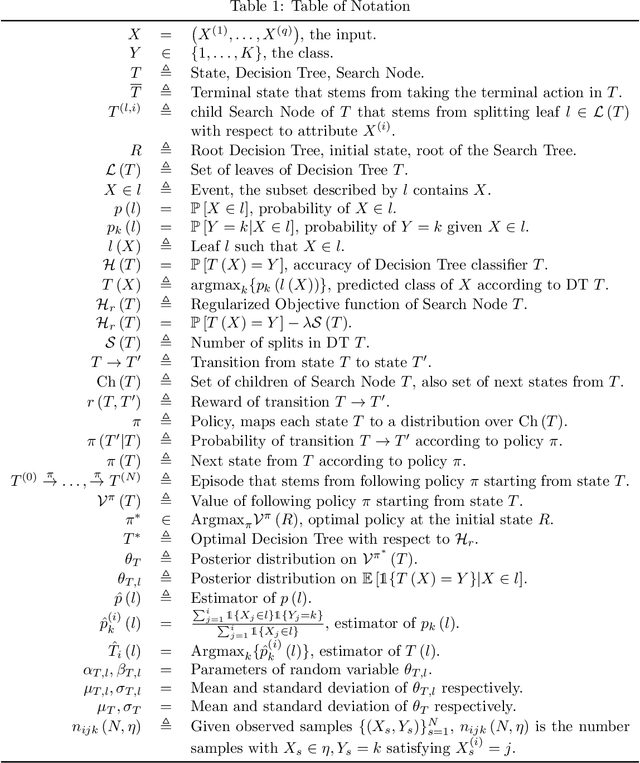
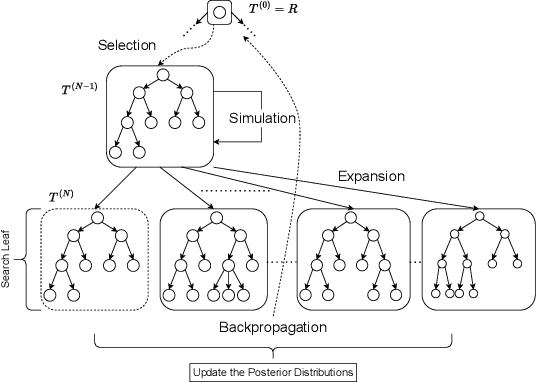
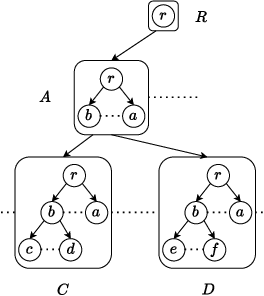
Abstract:Decision Trees are prominent prediction models for interpretable Machine Learning. They have been thoroughly researched, mostly in the batch setting with a fixed labelled dataset, leading to popular algorithms such as C4.5, ID3 and CART. Unfortunately, these methods are of heuristic nature, they rely on greedy splits offering no guarantees of global optimality and often leading to unnecessarily complex and hard-to-interpret Decision Trees. Recent breakthroughs addressed this suboptimality issue in the batch setting, but no such work has considered the online setting with data arriving in a stream. To this end, we devise a new Monte Carlo Tree Search algorithm, Thompson Sampling Decision Trees (TSDT), able to produce optimal Decision Trees in an online setting. We analyse our algorithm and prove its almost sure convergence to the optimal tree. Furthermore, we conduct extensive experiments to validate our findings empirically. The proposed TSDT outperforms existing algorithms on several benchmarks, all while presenting the practical advantage of being tailored to the online setting.
A Historical Context for Data Streams
Oct 18, 2023Abstract:Machine learning from data streams is an active and growing research area. Research on learning from streaming data typically makes strict assumptions linked to computational resource constraints, including requirements for stream mining algorithms to inspect each instance not more than once and be ready to give a prediction at any time. Here we review the historical context of data streams research placing the common assumptions used in machine learning over data streams in their historical context.
An Improved Yaw Control Algorithm for Wind Turbines via Reinforcement Learning
May 02, 2023Abstract:Yaw misalignment, measured as the difference between the wind direction and the nacelle position of a wind turbine, has consequences on the power output, the safety and the lifetime of the turbine and its wind park as a whole. We use reinforcement learning to develop a yaw control agent to minimise yaw misalignment and optimally reallocate yaw resources, prioritising high-speed segments, while keeping yaw usage low. To achieve this, we carefully crafted and tested the reward metric to trade-off yaw usage versus yaw alignment (as proportional to power production), and created a novel simulator (environment) based on real-world wind logs obtained from a REpower MM82 2MW turbine. The resulting algorithm decreased the yaw misalignment by 5.5% and 11.2% on two simulations of 2.7 hours each, compared to the conventional active yaw control algorithm. The average net energy gain obtained was 0.31% and 0.33% respectively, compared to the traditional yaw control algorithm. On a single 2MW turbine, this amounts to a 1.5k-2.5k euros annual gain, which sums up to very significant profits over an entire wind park.
Shapley Chains: Extending Shapley Values to Classifier Chains
Mar 30, 2023Abstract:In spite of increased attention on explainable machine learning models, explaining multi-output predictions has not yet been extensively addressed. Methods that use Shapley values to attribute feature contributions to the decision making are one of the most popular approaches to explain local individual and global predictions. By considering each output separately in multi-output tasks, these methods fail to provide complete feature explanations. We propose Shapley Chains to overcome this issue by including label interdependencies in the explanation design process. Shapley Chains assign Shapley values as feature importance scores in multi-output classification using classifier chains, by separating the direct and indirect influence of these feature scores. Compared to existing methods, this approach allows to attribute a more complete feature contribution to the predictions of multi-output classification tasks. We provide a mechanism to distribute the hidden contributions of the outputs with respect to a given chaining order of these outputs. Moreover, we show how our approach can reveal indirect feature contributions missed by existing approaches. Shapley Chains help to emphasize the real learning factors in multi-output applications and allows a better understanding of the flow of information through output interdependencies in synthetic and real-world datasets.
Transferable Deep Metric Learning for Clustering
Feb 13, 2023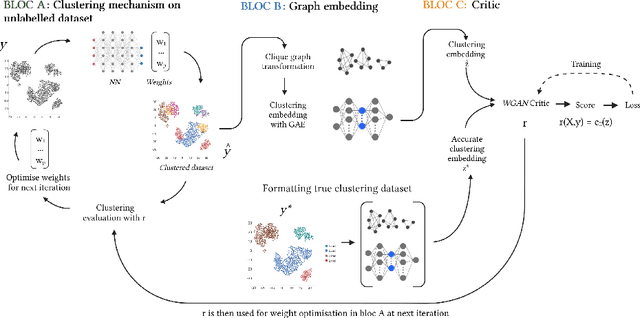

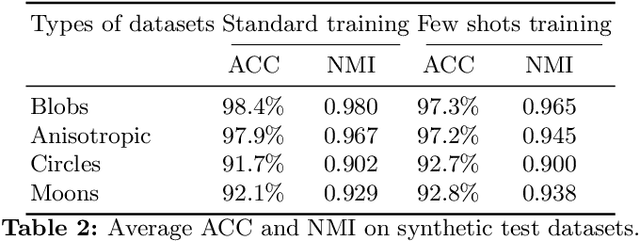
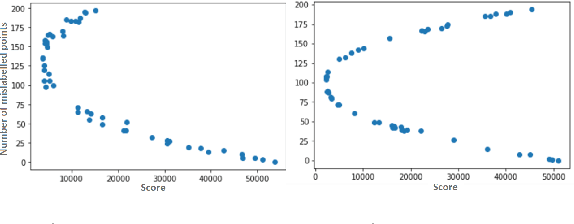
Abstract:Clustering in high dimension spaces is a difficult task; the usual distance metrics may no longer be appropriate under the curse of dimensionality. Indeed, the choice of the metric is crucial, and it is highly dependent on the dataset characteristics. However a single metric could be used to correctly perform clustering on multiple datasets of different domains. We propose to do so, providing a framework for learning a transferable metric. We show that we can learn a metric on a labelled dataset, then apply it to cluster a different dataset, using an embedding space that characterises a desired clustering in the generic sense. We learn and test such metrics on several datasets of variable complexity (synthetic, MNIST, SVHN, omniglot) and achieve results competitive with the state-of-the-art while using only a small number of labelled training datasets and shallow networks.
 Add to Chrome
Add to Chrome Add to Firefox
Add to Firefox Add to Edge
Add to Edge